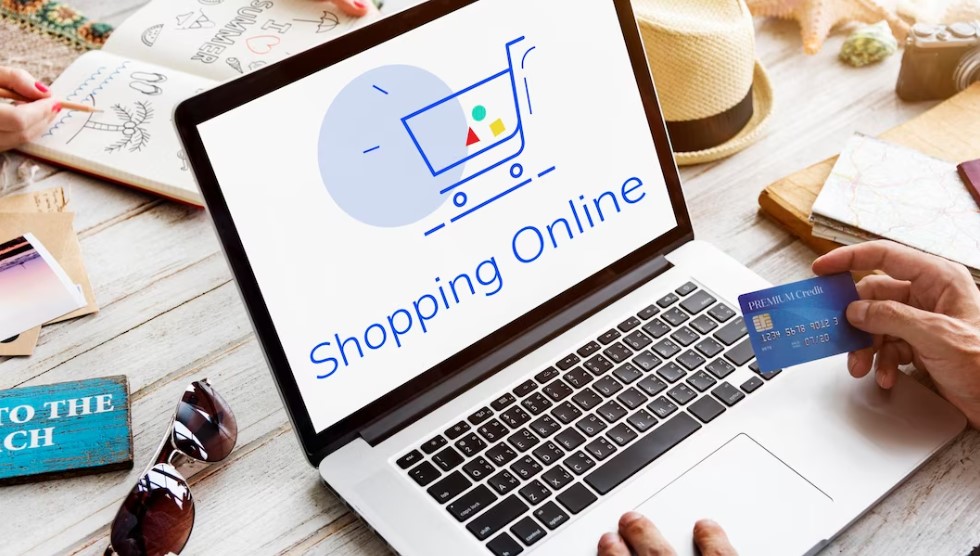Navigating Influencer Marketing in a Post-Pandemic World: What Has Changed?

As the world slowly emerges from the pandemic, businesses are starting to shift their focus back to marketing and advertising. One area that has seen significant changes in the past year is influencer marketing. In this blog post, we'll explore what has changed in the post-pandemic world of influencer marketing and how businesses can navigate this new terrain to achieve successful campaigns.
Influencer marketing during the pandemic
Influencer marketing has been a popular and effective marketing strategy for many years, but the COVID-19 pandemic brought about significant changes in the industry. The pandemic forced businesses to shift their focus to digital channels, including social media, which led to an increase in influencer marketing.
During the pandemic, many people were spending more time at home and online, which made social media platforms like Instagram, TikTok, and YouTube more popular than ever. As a result, businesses turned to influencers to help them reach their target audience.
One of the main benefits of influencer marketing during the pandemic was that it allowed businesses to reach their target audience in a more authentic and relatable way. Influencers are seen as trusted sources of information and recommendations, which can be especially valuable during times of uncertainty.
In addition, influencer marketing during the pandemic allowed businesses to stay top-of-mind with their target audience, even when they weren't able to operate as usual. With many businesses forced to close their physical locations or limit their operations, influencer marketing provided a way for them to stay connected with their customers and promote their products or services.
However, the pandemic also brought about some challenges for influencer marketing. Many influencers were unable to create content in the same way they were used to, with travel restrictions, social distancing guidelines, and other factors limiting their ability to create high-quality content.
In addition, the pandemic brought about changes in consumer behavior, with people becoming more cautious about their spending and the brands they choose to support. As a result, businesses needed to be more mindful of the influencers they worked with and the messages they promoted.
Despite these challenges, influencer marketing during the pandemic was still a valuable tool for businesses looking to reach their target audience. By working with influencers who could create authentic and relevant content, businesses were able to stay top-of-mind with their customers and continue to promote their products or services.
Moving forward, the pandemic has shown us that influencer marketing will continue to be a valuable marketing strategy, especially as more people spend time online and on social media. However, businesses will need to be more mindful of consumer behavior and work with influencers who can authentically promote their products or services to their audience.
Changes in consumer behavior

The pandemic brought about significant changes in consumer behavior. With many people forced to stay at home, limit their social interactions, and adapt to new routines, their priorities and habits shifted, which had a major impact on the way they shop and consume products and services.
One of the most noticeable changes in consumer behavior during the pandemic was a shift towards online shopping. With physical stores closed or operating at limited capacity, consumers turned to e-commerce to purchase products and services. This trend was particularly evident in categories such as groceries, personal care, and household essentials, as consumers looked for ways to limit their exposure to the virus and stock up on supplies.
Another change in consumer behavior during the pandemic was a shift towards value-based shopping. As economic uncertainty and job losses became more common, consumers became more cautious about their spending and focused on purchasing products and services that offered good value for money. This led to an increase in demand for essential items and a decrease in spending on non-essential items such as luxury goods and travel.
In addition, the pandemic brought about changes in the way consumers interacted with brands. With people spending more time at home and online, social media became a more important channel for brands to engage with their customers. Brands that were able to adapt quickly and offer relevant and helpful content during the pandemic were able to build stronger relationships with their customers.
The pandemic also led to a change in the way consumers viewed brand values. As social issues such as racial inequality and sustainability became more prominent, consumers began to expect brands to take a stance and act on these issues. Brands that were able to demonstrate their commitment to these values were able to build trust and loyalty with their customers.
Lastly, the pandemic brought about a change in the way consumers view health and wellness. With the threat of the virus looming, consumers became more focused on their health and wellbeing. This led to an increase in demand for products and services that promote health and wellness, such as fitness equipment, healthy food options, and mental health services.
The rise of micro-influencers

The pandemic has had a significant impact on the influencer marketing landscape, and one of the most notable changes has been the rise of micro-influencers. With many brands facing budget constraints and a need to connect with audiences in a more authentic way, micro-influencers have become an increasingly popular choice for influencer campaigns.
Micro-influencers are social media influencers with a smaller following compared to macro-influencers or celebrities, typically between 1,000 and 100,000 followers. While they may not have the massive reach of macro-influencers, they often have a highly engaged and loyal audience, which can be more valuable for brands looking to build genuine connections with their target consumers.
During the pandemic, many brands turned to micro-influencers to help them navigate the challenges of the crisis. With traditional marketing channels disrupted and consumers spending more time online, brands needed to find new ways to reach and engage with their audiences. Micro-influencers provided a cost-effective and impactful solution, allowing brands to tap into highly engaged communities and reach niche audiences with specific interests or needs.
One of the key benefits of working with micro-influencers during the pandemic has been their ability to create authentic and relatable content that resonates with their followers. With many people experiencing similar challenges and struggles during the pandemic, micro-influencers were able to speak to these issues in a way that felt genuine and relatable. This helped brands to build stronger connections with their target consumers and show that they understood and empathized with their audience's needs.
Another benefit of working with micro-influencers has been their flexibility and agility. With the pandemic causing rapid changes in consumer behavior and preferences, brands needed to be able to pivot their marketing strategies quickly to stay relevant. Micro-influencers were able to adapt to these changes and create content that was tailored to the evolving needs and priorities of their audiences.
Finally, working with micro-influencers has also helped brands to reach new and diverse audiences. With micro-influencers often operating within specific niches or communities, brands have been able to tap into audiences that they may not have been able to reach through traditional marketing channels.
Increased focus on brand values

The COVID-19 pandemic has led to significant changes in consumer behavior and expectations, and one of the key shifts has been an increased focus on brand values. With the pandemic impacting people's lives in so many ways, from health and wellness to economic stability and social justice, consumers are paying more attention to the values and actions of the brands they support.
One of the reasons for this increased focus on brand values is the pandemic's impact on people's sense of community and collective responsibility. With many people feeling isolated and vulnerable during the crisis, they have looked to brands to provide leadership and support. Brands that have shown a commitment to values such as social responsibility, sustainability, and inclusivity have been seen as more trustworthy and reliable partners in navigating the challenges of the pandemic.
Another factor driving this trend is the rise of social media and digital communication channels. With more people spending time online and using social media to connect with others, it has become easier for consumers to share their thoughts and opinions about brands and their actions. This has led to a greater degree of transparency and accountability in the business world, with brands being held to higher standards of ethical and social responsibility.
In response to this trend, many brands have focused on communicating their values and demonstrating their commitment to social and environmental issues. This has involved everything from public statements and social media campaigns to tangible actions such as donations to charity or investments in sustainable practices.
For example, some brands have donated a portion of their sales to COVID-19 relief efforts, while others have taken steps to reduce their environmental impact, such as switching to more sustainable packaging or sourcing materials from ethical suppliers. Additionally, some brands have taken a stance on social justice issues, such as supporting diversity and inclusion in the workplace or speaking out against racial inequality.
By emphasizing their values and taking concrete actions to support them, brands have been able to build stronger connections with their audiences during the pandemic. Consumers are increasingly looking for brands that align with their own values and beliefs, and are more likely to support those that they feel are making a positive impact in the world.
The importance of metrics and measurement

As businesses adapt to the new reality of the pandemic, it has become more important than ever to measure the effectiveness of marketing efforts and track relevant metrics. In this article, we will explore the importance of metrics and measurement during the pandemic and how businesses can leverage this information to make informed decisions.
One of the key reasons for the increased importance of metrics during the pandemic is the economic uncertainty that many businesses are facing. With budgets being tightened and resources being stretched, it is essential to understand which marketing efforts are delivering the best results and which ones are not. By tracking metrics such as conversion rates, click-through rates, and customer acquisition costs, businesses can gain valuable insights into the effectiveness of their marketing campaigns and make data-driven decisions about how to allocate resources.
Another reason for the increased importance of metrics during the pandemic is the changing consumer behavior. With many people staying at home and relying on digital channels to connect with brands and make purchases, businesses need to track metrics that reflect these changes. For example, metrics such as website traffic, engagement rates, and social media mentions can provide valuable insights into how consumers are interacting with brands in this new environment.
In addition to tracking metrics, businesses also need to use this information to make informed decisions. This means analyzing the data and identifying patterns and trends that can inform future marketing strategies. For example, if a certain type of content is generating high engagement rates on social media, businesses may want to invest more resources into creating similar content in the future. Similarly, if a certain advertising channel is not delivering the desired results, businesses may want to shift their focus to a different channel.
Finally, it is worth noting that the pandemic has created new opportunities for businesses to leverage data and measurement in their marketing efforts. For example, with more people shopping online, businesses can use data to personalize the shopping experience and deliver targeted offers and promotions. Similarly, businesses can use data to monitor customer sentiment and identify areas where they can improve the customer experience.
Navigating influencer marketing in a post-pandemic world requires businesses to be more mindful of consumer behavior, work with micro-influencers, focus on brand values, and measure the success of their campaigns. By doing so, businesses can create successful influencer marketing campaigns that resonate with their target audience and drive results. In addition, businesses need to adapt to the changing landscape of influencer marketing by being flexible and willing to experiment with new strategies and tactics.
--------------------------------------
ZapMyWork.com is your one-stop shop for all your freelance needs. We are an online marketplace that connects clients with skilled and talented freelancers from around the world. One of the things that sets us apart from other freelance marketplaces is our rigorous screening process. We carefully vet all of our freelancers to ensure that they have the skills and experience to deliver high-quality work, one project at a time. Let us know how we can help you today!
Recent Posts
-
04/26/2024Thriving Through Flexibility: How FlexiConsulting Found Success with ZapMyWork
-
04/19/2024Flourishing Home Trends: How "ZapMyWork" Became the Cornerstone of Our Interior Design Success
-
04/15/2024Weaving Success with ZapMyWork's Freelance Marketplace
-
04/12/2024Streamlining Project Management in Small Businesses: The ZapMyWork Experience with ClearVision Consulting
-
04/10/2024Transforming Toy Design with Electronics Engineering Freelancers: A Case Study on ToyInnovate
Store Address
Information
Copyright © 2022 - Present. ZapMyWork, LLC. All Rights Reserved




